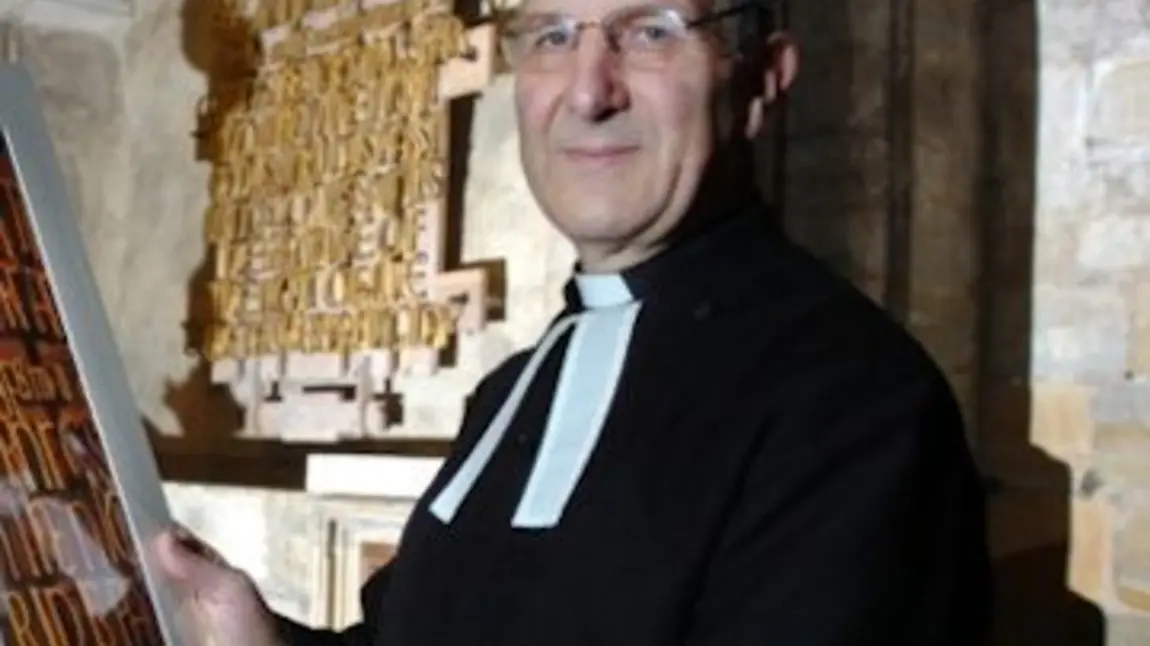Why open up Durham Cathedral's collections?

HLF's recent funding award to Durham Cathedral means we are within sight of achieving our long-held dream of displaying the cathedral’s marvellous treasures in some of its equally marvellous medieval spaces.
The buildings round the cloister constitute the unique (for England) survival of an intact monastic enclosure that is still used for the religious purposes for which it was intended.
Their treasures include relics associated with St Cuthbert such as his coffin, pectoral cross and portable altar. Not only that, but the cathedral Library has retained more of its monastic collections of medieval manuscripts and early printed books than anywhere else in the country.
A witness to history
The collections are of world significance as a witness to the civilisation, culture and history of Christian North East England particularly in the Saxon and early Norman periods. They more than do justice to the landscape and architecture of the World Heritage Site that has been their home for so many centuries. What we have lacked are facilities to exhibit them properly.
In the 21st century, this means creating environments that conform to the highest conservation and security standards in which they can be safely displayed and interpreted. To adapt medieval buildings for this purpose while at the same time enhancing their beautiful interiors in their own right is a formidable challenge.
What is Open Treasure?
After years of planning, we are now poised to realise this dream. Called Open Treasure, the development will create three large exhibition spaces; the first in the monastic Dormitory (which will still retain its 19th-century function as a library). Its focus will be the shaping of church and cathedral in medieval Northumbria, and how this story of a faith community has continued beyond the Reformation into the present day. A newly constructed gallery, adjoining the Dormitory, will house some of our most important and precious manuscripts and artefacts, while the final exhibition space in the Great Kitchen will have as its focus St Cuthbert and the relics associated with his memory.
Why Open Treasure? Obviously because we shall be opening up what has been largely hidden from public view in the past: incomparable medieval rooms, and the equally incomparable treasures they will contain. This year’s highly successful Lindisfarne Gospels exhibition, in which the cathedral has been a partner and to which we lent no fewer than 14 items for display, has shown that there is a real appetite for Christian heritage that is beautifully displayed and intelligently interpreted.
Sustaining the cathedral
But the bigger treasure is the cathedral itself, so much loved and admired across the world, and its community that has its origins in seventh-century Lindisfarne. Like the Benedictine house that it became, the cathedral is still a living place of worship, work and learning and this adds vital contemporary human texture to historic buildings and artefacts.
In addition, we want to maintain free entry to the cathedral itself. By opening up our ‘Treasure’ as a revenue-earning exhibition, we hope to stabilise the cathedral’s finances to ensure that it will never be necessary to levy an admission charge to such a fine sacred space.
Thanks to HLF and other generous funders, this vision is close to becoming reality. We are humbled, and grateful.